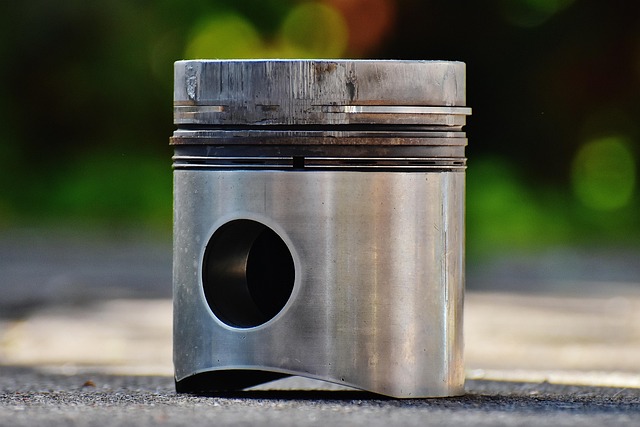Looking to register your car in California? Navigating the process can seem daunting, but we’ve broken it down step-by-step. First, understand the state’s specific requirements for car registration, focusing on essential documents needed for a successful VIN verification. Learn how to perform this crucial check and complete the application process at the DMV or online seamlessly. Finally, discover the fees involved and obtain your license plate. Master these steps for a smooth California car registration experience, ensuring compliance through effective VIN verification.
- Understand California Car Registration Requirements
- Gather Necessary Documents for VIN Verification
- Perform Vehicle Identification Number (VIN) Check
- Complete Application Process at DMV or Online
- Pay Registration Fees and Obtain License Plate
Understand California Car Registration Requirements

Before registering your car in California, it’s crucial to understand the state’s specific requirements for vehicle registration and documentation. One key aspect is ensuring proper VIN verification. The Vehicle Identification Number (VIN) is a unique code that identifies your vehicle, and accurate VIN data is essential during the registration process.
In California, you’ll typically need to provide a current vin inspection or mobile vin verifier report from a certified inspector. This step verifies that your vehicle matches the information on file with the DMV. Additionally, gather essential documents like proof of ownership, insurance, and any applicable fees to streamline the registration process at your local California Department of Motor Vehicles (DMV) office.
Gather Necessary Documents for VIN Verification

Before heading to the California Department of Motor Vehicles (DMV), ensure you have all the required documents for a successful vehicle registration and vin verification. This process is crucial for establishing ownership and ensuring your car meets safety standards. Gather your vehicle’s registration certificate, which can usually be obtained from a previous state if you’ve recently purchased the car. Additionally, provide proof of insurance, which showcases your financial responsibility and compliance with California’s legal requirements.
For convenience, many opt for a mobile vin verifier or arrange a vin inspection before visiting the DMV. This step simplifies the process, especially for busy individuals. Having these details ready demonstrates your preparation and facilitates a smoother registration experience.
Perform Vehicle Identification Number (VIN) Check

Before you begin the registration process, it’s crucial to perform a Vehicle Identification Number (VIN) check. This step is essential for ensuring that your vehicle’s history is clear and accurate. A VIN verification involves cross-referencing the unique 17-character code with databases to gather information about the car’s past ownership, accidents, and maintenance records. Many online tools offer this service, but for a more efficient and secure process, consider using a mobile vin verifier.
A mobile vin inspection can provide real-time data, giving you peace of mind that your vehicle is safe and legal to register. This is particularly important in California, where strict regulations are in place to protect both consumers and the environment. By conducting a thorough VIN verification, you’ll be one step closer to completing the registration process smoothly and ensuring your new (or used) car is ready for California’s roads.
Complete Application Process at DMV or Online

In California, registering a car involves a straightforward process that can be completed at a DMV office or online. The first step is to gather all necessary documents, including your vehicle’s registration certificate from the previous state, proof of insurance, and identification. Once you have these ready, you can begin the application process.
When opting for the online method, the California Department of Motor Vehicles (DMV) offers a convenient platform where you’ll need to input your Vehicle Identification Number (VIN) for vin verification. This ensures the vehicle’s authenticity and history. You’ll also be required to upload relevant documents for a mobile vin inspection or vin inspection, depending on your preferred method. After submission, the DMV will process your application, and once approved, they’ll issue a registration certificate, making your car officially registered in California.
Pay Registration Fees and Obtain License Plate

After completing your vehicle’s registration application, it’s time to take care of the financial aspects. You’ll need to pay the registration fees in full, which vary depending on the type and age of your vehicle. This can usually be done online or at a local DMV office. Once your payment is processed, you’ll receive your registration certificate, a vital document that confirms your car’s legal status.
Along with this certificate, you’ll also obtain your license plates. These plates are unique to your vehicle and are a crucial part of its identification. In California, these plates serve not only as identification but also as a constant reminder of your vehicle’s registration status. Ensure they are displayed properly on both the front and rear of your car. As an added step, consider using a mobile VIN verification service for peace of mind; this can help confirm your vehicle’s authenticity and history before you drive off with your new plates.
Registering a car in California involves understanding key requirements, gathering essential documents for VIN verification, completing a straightforward application process either at the DMV or online, paying registration fees, and obtaining license plates. By adhering to these steps and ensuring accurate VIN verification, you’ll successfully navigate the car registration process in this state.
